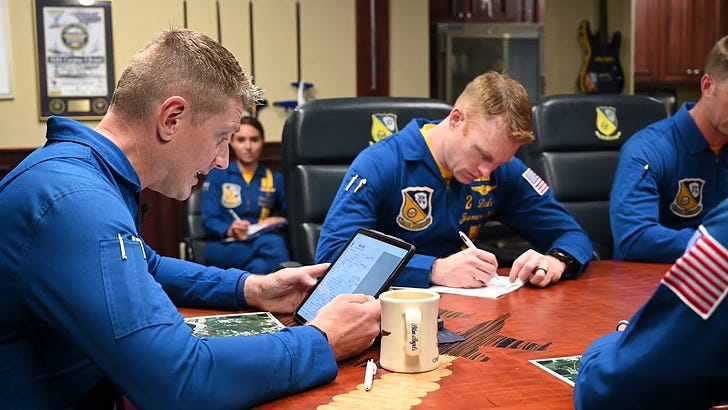“Nothing is certain but death and taxes”—and learning a new jet (again).
This is certainly the case for military aviators, as I’m now on my 4th different aircraft since joining the Navy. That means my fourth new set of systems, a slew of memory emergency procedures and limits, and cockpit orientation.
None is more important than the other, but in my opinion, a solid understanding of the aircraft’s cockpit layout is fundamental to performing professionally during normal operations and safely during emergency situations.
I can’t speak for Air Force jet pilots, but one thing that sets the Navy jet community apart—even from the rest of naval aviation—is that we do all of our starts from flow and memory.
We still use the NATOPS and any squadron SOPs to make sure we’re following the rules, and we lean on those foundational documents to learn the strict startup procedures.
…But then it’s up to each pilot to create their own flow from memory to quickly and efficiently start up the jet and meet up in marshal with the rest of the flight. No one wants to be the last one to marshal.
Which leads me back to my original point on this topic: learning the cockpit is a crucial first step in becoming a competent aviator—jet pilot or weekend hobbyist.
My process for getting myself up to speed in a new jet looks something like this:
✅Review in detail the NATOPS-prescribed checklist for normal start procedures
📝Create flashcards or have a buddy quiz me on the locations of the most relevant buttons/switches/handles
💺Chairfly emergency procedures in the simulator (or with a cockpit poster if that’s all that’s available) and practice actually moving key switches
🧠Build a personalized checklist in an order that my brain can understand, that solidifies a flow in which I won’t forget anything
I remember the learning curve jump that occurred from using a standardized item-by-item checklist in the T-6 to doing it all by memory in the T-45, and thinking what an impossible task that seemed to be. But when you force yourself to commit things to memory, your level of competency greatly improves.
As an aviator, the more you can “become one with the aircraft”, the better you’ll be—from the basics to emergencies.
Even the Blues refamiliarize themselves with the cockpit before every flight—because mastery is never a one-and-done achievement.
What do you think is the most important part about learning a new aircraft? Let me know!



